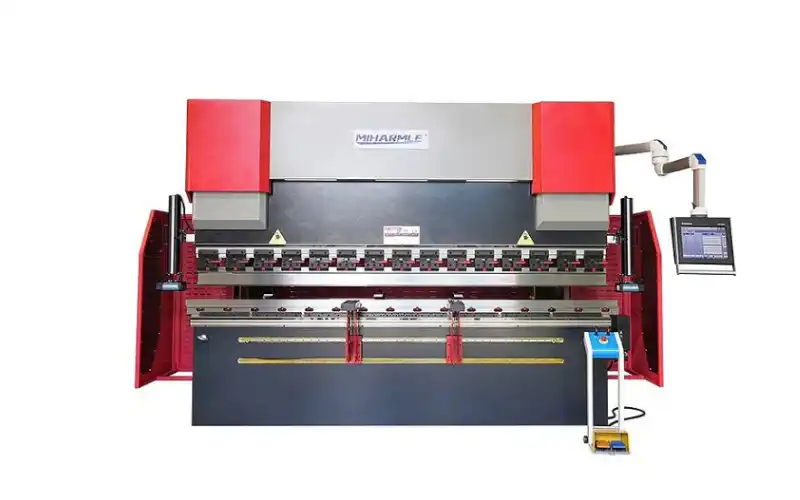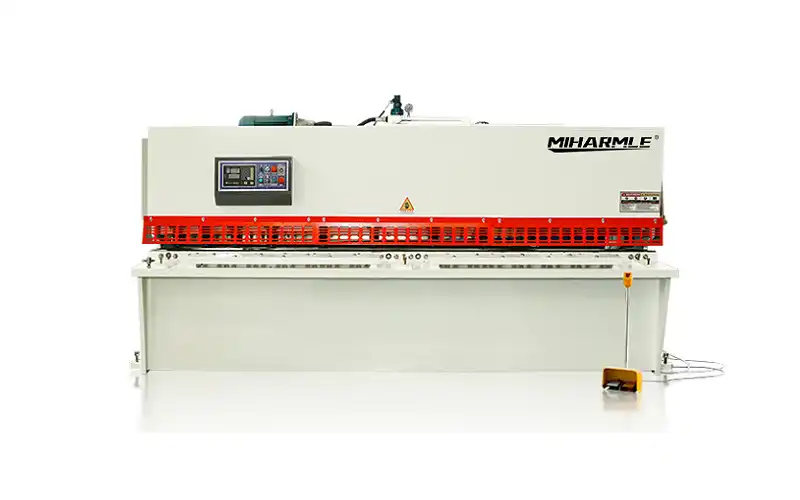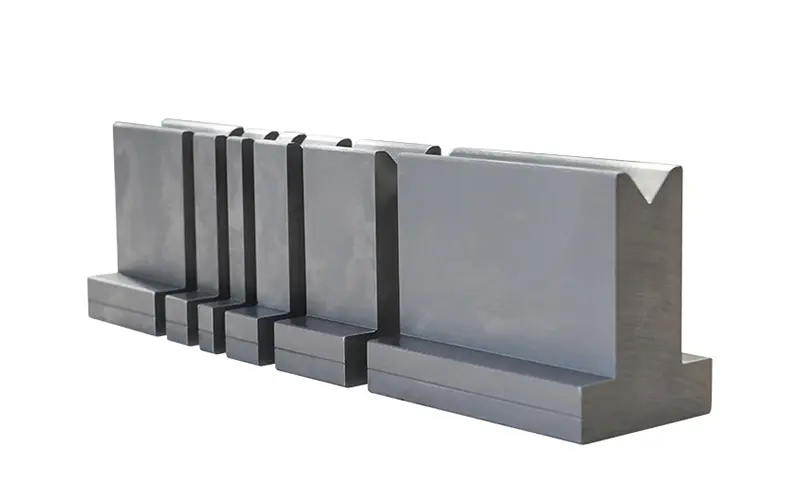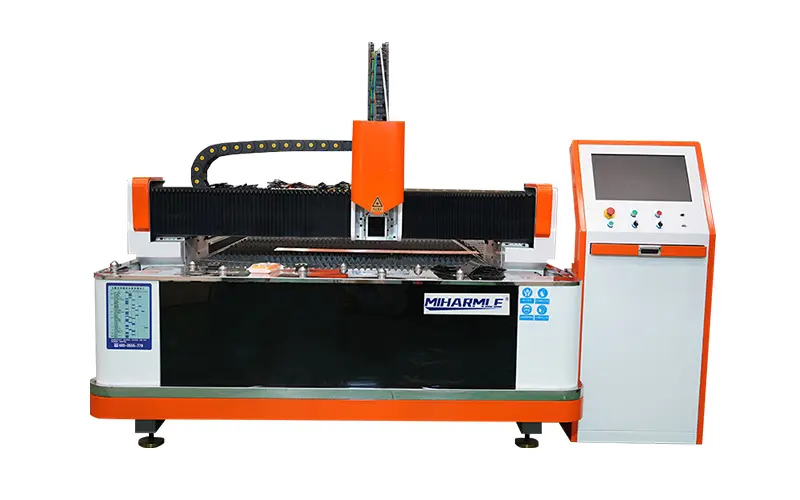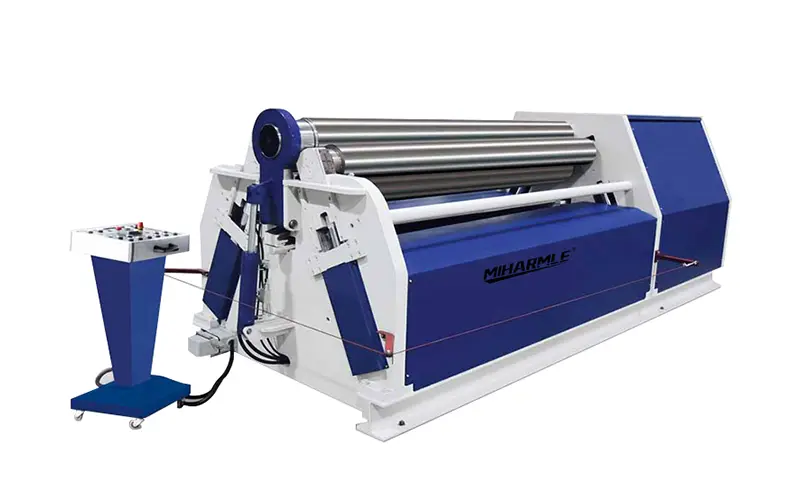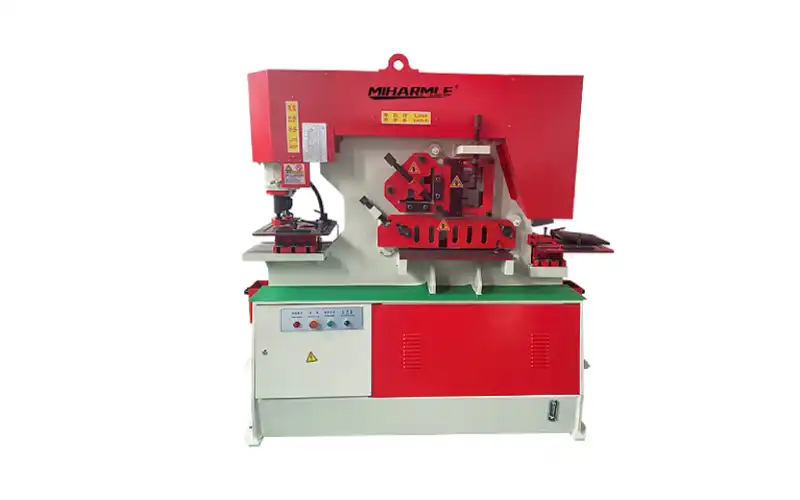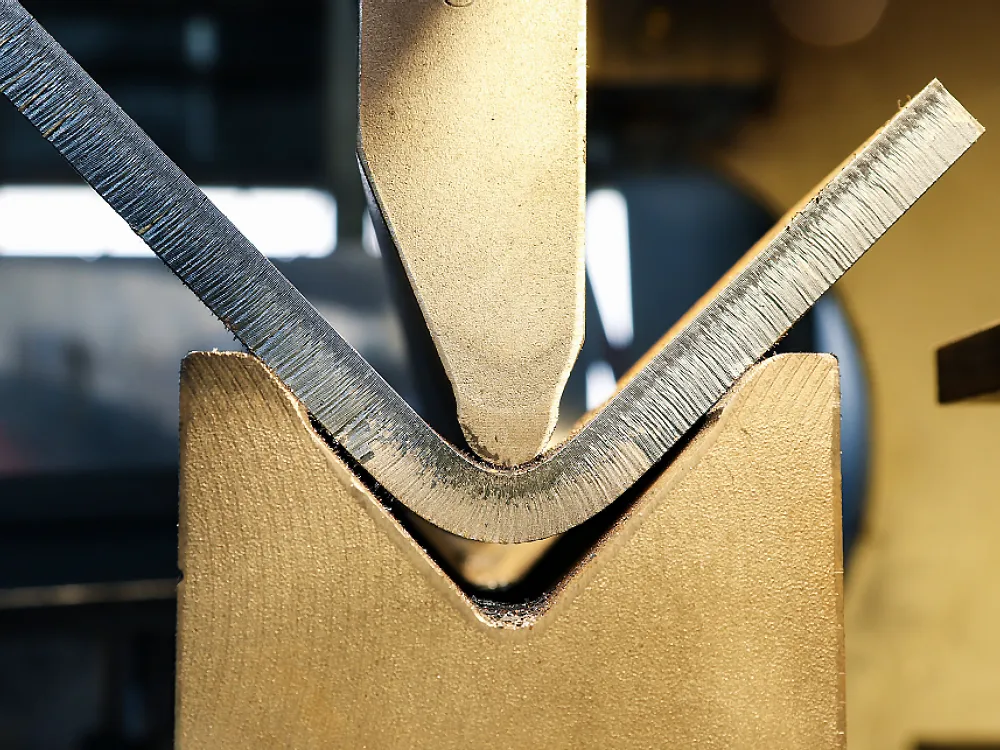
Metal bending is the heart of metalworking. It helps to change sheets and pieces into desired shapes. Metal fabrication wouldn’t be possible without such bending. However, there are different types of metal bending. Each bending type and technique has unique pros and cons.
Understanding these types is paramount for producing precise metal parts and components. Moreover, which kind of bending you should use also depends on the type of material. This guide will cover everything on metal bending. So let’s get started!
What is Sheet Metal Bending?
It is the process of changing the metal sheets into different shapes. Different machines are used in metal bending; each bending type needs a specific tool. They apply force on the piece of metal and bend it. Metal bending is very famous due to its ease and precision.
According to FMI, sales of metal bending machines will reach $1,344.60 million by 2034. This indicates the importance of the bending process. Many industries use these machines. You’ll have bending tools in almost every metal workshop.
Which type of bending should be used for any specific bending? Keep in mind that each bending type requires a particular method and machine. Moreover, the material under work also influences the technique. For example, aluminum is soft, which is different from bending steel.
Every industry uses metal bending tools, from aerospace to automobiles. Some tools are very advanced and offer excellent performance and exceptional turnaround times. However, they are also costly. Let’s dive deeper and discuss different types of metal bending.
7 Types of Sheet Metal Bending
Notably, the metal sheet bending depends on many factors. Those include metal thickness, bending angle, and bend allowance.
All these factors must be considered before starting the bending process. These factors will always be important no matter what bending type you use.
Here is the list of different types:
- Air Bending
- Coining
- V-Bending
- Folding
- Rolling
- Bottom Bending
- Wipe Bending
Each of these methods is excellent. They serve their purpose according to their capacity. However, their performance will depend on the material thickness and bending angles. Let’s drill down and discuss each of these types in detail.
1- Air Bending
Air bending does not offer excellent bending precision. The punch does not put brutal force on the workpiece placed on the die. Instead, it uses small force to compress and change the shape of the metal. Keep in mind that this bending method requires a lower-tonnage press brake.
The die can be either U or V-shaped. It depends on the bending or shape you need. Air bending produces not very shallow bends. As you know, the die has two shoulders and one deeper pocket. The workpiece does not go into the deep pocket. Instead, it only touches the shoulder of the die.
2- Coining
This bending type is opposite to that of air bending. Extensive force is applied to this method. The workpiece is placed on the die. The punch applies brutal force on it and compresses it. The force is so strong that the workpiece goes inside the die and adopts a die shape.
This type of bending gives you more edge finishing. However, the chances of cracks and material deformation are high. It is used for bending heavy sections. The only drawback is that it requires high-tonnage press brakes. It is a less flexible bending type than other types.
3- V-Bending
This type of bending is more like a coining method. Both die and punch have the same V shape. The material under the workpiece is placed on the die. The punch applies the force and bends the material.
The punch applies brutal force to the workpiece. So, it goes inside groves of dye and adopts the shape of a die. Depending on the user’s needs, this method can bend the workpiece to any angle. It has many subtypes which bend the material at different angles.
4- Folding
This bending type does not involve punch or die. Instead, the bending blade bends the material in a straight line. The clamp holds the workpiece. You can adjust the clamp accordingly to get your desired shape. This method involves two types of bending.
The bending beam pushes the unclamped part of the metal up or down. Due to this force, the bend gets created. Remember that this bending method entirely relies on the operator’s skill. It is a more traditional bending process. It can create complex bends with ease and high precision.
5- Rolling
This bending method is unique because it consists of rollers instead of punches and dies. The workpiece is placed between these rollers, which roll, apply force, and bend the workpiece. Remember that this method can only create curves but not strict bends. The position of the rollers can be adjusted according to the need for bending tightness.
You can bend a metal sheet to any desired radius. Nonetheless, this method is ideal for producing curves and making cylindrical shapes. Many manufacturers use this method to convert metal into tubes. Remember that different roller machines are available.
Each offers different levels of functionality. For example, one roller machine produces less strict bends. On the other hand, two and three roller machines produce more sharp bends and curves. This method has one drawback: it cannot make sharp bends.
6- Bottom Bending
It is also known as bottoming and is a subtype of V-type bending. In this type, the workpiece is placed on the die. The punch presses the workpiece into the V-shaped die. The workpiece gets pushed into the die and goes inside the groove of the die. You must remove the workpiece from the die, which will be shaped into a V.
This method is suitable for producing sharp bends and deep boxes. You might wonder why I consider this method ideal for creating boxes. This is because bottom bending is highly repeatable. So, you can repeat the bend in one piece and make a box of it. Moreover, it is exact and accurate.
Disclaimer: Each of these bending types is excellent. However, they can do more harm than good when not operated properly. Their precision and bend quality majorly depend on the operators. Moreover, all of these types can create cracks in workpieces. So, be very careful.
7- Wipe Bending
This method is also known as edge bending. It bends the edge of the workpiece. First, the metal piece is placed on the die. However, a part that is desired to be bent is not placed on the die. Instead, this part remains on the outer side of the die.
The punch now presses this workpiece from the top as well as from the side. Depending on the punch’s position, the workpiece gets bent at its bottom or top. I recommend this method when you need sharp, repeated bends. It requires a skilled operator to place precise metal pieces.
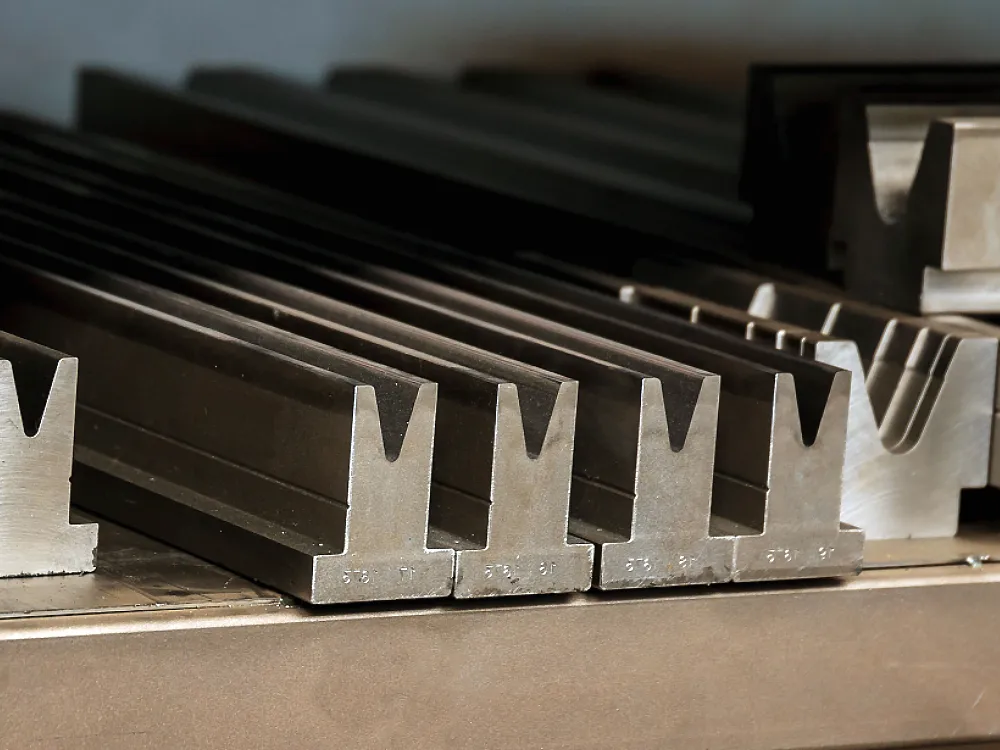
Materials Suitable for Bending
Different types of materials behave differently when subjected to bending. Some are very strong and thick. So, they don’t bend at all.
In contrast, some materials are relatively soft and malleable. So they can easily be bent. Moreover, different materials require different types of bending. Here are some common materials that are used in bending
- Carbon Steel: This material is also known as mild steel and is very soft. It is relatively easy to bend and can be formed into various shapes.
- Stainless Steel: This material is more rigid and requires more force to bend. It also shows excellent rust resistance. However, it can be bent by trying different bending methods.
- Copper: This material is present in almost every home through wires. It is very soft, so it bends easily. No matter what type of bending you use, copper will not show any resistance.
- Brass: This metal is solid and durable, so it can’t be bent easily. However, you can try different types and tools to complete the bending. Although it resists warping, it can be done with some patience.
- Aluminum: Aluminum is one of the most used metals on earth. Everyone knows that it is very soft and flexible. So, you can bend it with both V-bending and air bending. Keep in mind that different aluminum alloys are available. All of those can differ in terms of bending capacity.
These are lists of materials actively bent to make different shapes. Many other materials are also included. Remember that more robust materials usually don’t bend, and vice versa.
Tools for Bending
Press Brake
- Advantages: High precision, suitable for mass production, multiple mold options, high degree of automation.
- Disadvantages: High equipment cost, large footprint, and professional training required for operation.
- Scope and application: It is suitable for bending large metal sheets. It is used in the automotive, aerospace, home appliances, and construction industries.
- Applicable plates and types: It is commonly used for thicker metal sheets. These include carbon steel, stainless steel, and aluminum plates.
Bending Jigs
- Advantages: Suitable for bending small parts, simple to make, and low cost.
- Disadvantages: Low precision, manual operation required, and low efficiency.
- Scope and application: It is suitable for small-batch production or prototyping. This is especially true for metal parts that need specific angles and shapes.
- Applicable plates and types: These are mostly used for thinner steel, aluminum, and copper plates.
Roll Bender
- Advantages: Suitable for bending pipes and plates, simple operation, and can bend larger radius.
- Disadvantages: It cannot be used for complex shapes, has low precision, and has limited applicable materials.
- Scope and Application: Suitable for making large radius bends in metal frames, piping systems, and building structures.
- Applicable plates and types: These are mainly used for steel, aluminum, and stainless steel pipes.
Rotary Draw Bender
- Advantages: Suitable for bending complex shapes, high precision, and a wide range of applicable materials.
- Disadvantages: High cost, complex operation, and professional training required.
- Scope and Application: It is widely used for precise bending. It is used in automobile exhaust systems, bicycle racks, and furniture manufacturing.
- Applicable plates and types: Steel pipes, stainless steel pipes, aluminum pipes, etc.
Sheet Metal Bending Dies
- Advantages: High precision, suitable for mass production, and customizable die shapes.
- Disadvantages: High die production cost and long die replacement time.
- Scope and Application: It is suitable for mass-producing electronic equipment housings, panels for home appliances, and car body parts.
- Applicable plates and types: These are suitable for various metal sheets, including carbon steel, stainless steel, and aluminum plates.

Things to Consider for Metal Bending
Metal bending may seem simple, but it is not!
Many things must be checked before bending a metal sheet. Slight mistakes can lead to a wrong bend.
In the section below, I will give you some tips on bending. They will help you get 100% accuracy when bending the material.
- As discussed earlier, different materials you aim to bend can have different properties. They also behave differently when it comes to bending. The material type will determine the bending method and force required. Don’t randomly choose any method; it can do more harm than good.
- The thicker and stronger materials are usually hard to bend. So, you will have to apply a high-tonnage bending machine. This will ensure that matters get bent at the desired angle and shape.
- Tensile strength is another critical parameter that must be considered. Each material has its tensile strength. When bending, never apply more force than the material’s tensile strength; it will simply break.
- Most beginners need to remember the bend allowance. Many people don’t understand these characteristics. Bend allowance is the material elongation that happens during the bending process. You should ensure the desired bend allowance is considered in the bending process.
- During bending, you must be patient. One wrong move can disturb the accuracy and precision of the bend. Before starting the process, you should carefully analyze the material. It will help you understand the nature of the material and the bend it can bear.
FAQs
Q1: What are the different types of metal bending?
Metal fabricators use various types of metal bending. The most famous types include air bending, rolling, folding, bottoming, coining, and wipe bending.
Q2: What is metal bending called?
Multiple names are used as alternatives to metal bending. “Forming” or “Metal Forming” are commonly used for metal bending.
Q3: What metal is used for bending?
Many soft metals can be bent, including aluminum, copper, brass, mild steel, and stainless steel. However, the more robust the metal, the harder it will be to bend, and vice versa.
Q4: What are the common defects in metal bending?
Undoubtedly, metal bending is the most used and helpful tool in metalworking. However, when the proper bending procedure is not followed, it can result in cracks or deformation of the workpiece. In addition to cracks, wrinkling, spring back, and workpiece distortion can also occur.
Q5: How do I prevent cracking during metal bending?
A few factors must be considered to avoid cracking during bending. Those include the thickness of the metal piece, bend allowance, bending radius, and the material’s tensile strength. You should never exceed the bending radius and material’s capacity.
Conclusion
Metal bending helps manufacturers make any shape. It not only helps create different shapes but also helps in mass production.
Different types of metal bending are available, and understanding each is crucial.
This guide covers everything about bending types. Which type you should use depends on the material you are working with.
In the end, bending is a delicate process, so precision and patience are required to achieve the desired results.

